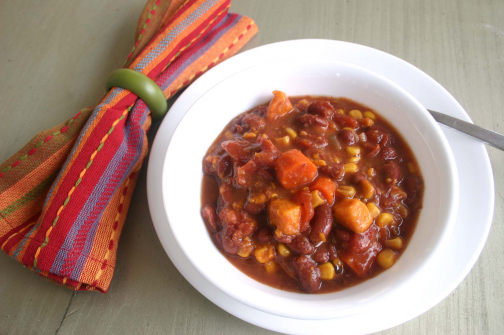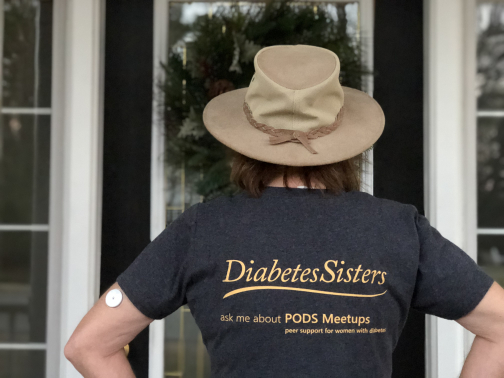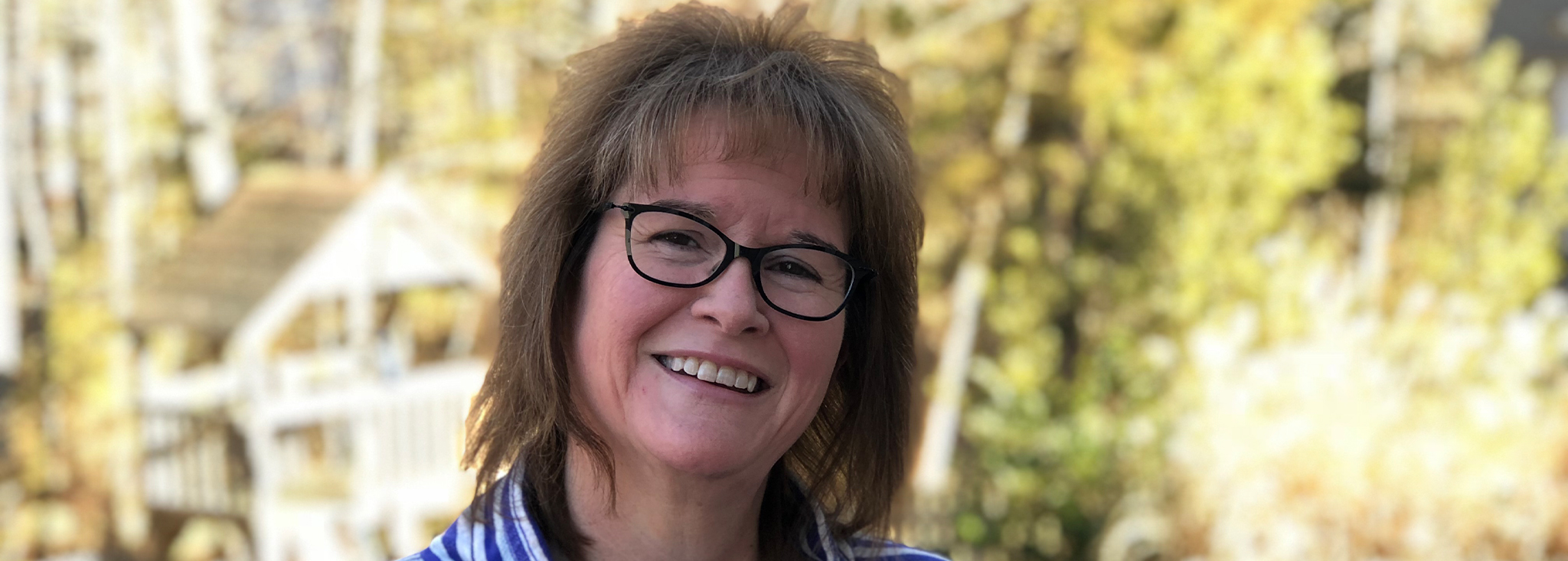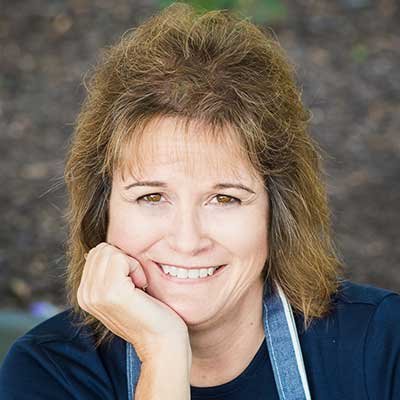Finding Our Inner Foodie with Shelby Kinnaird
Shelby Kinnaird has been living with type 2 diabetes for 20 years. Since her diagnosis, she’s started her website, The Diabetic Foodie, to show people with diabetes can eat well without sacrificing flavor or neglecting their sweet tooth. As a member of DiabetesSisters, an organization dedicated to helping women live well with diabetes, Kinnaird serves as a PODS leader, where she hosts meetups to help women find peer support. She chatted with the Beyond Type 2 team to share her diagnosis story, her website, role with DiabetesSisters, and easy ways for you to start cooking at home today.
When were you diagnosed with diabetes? Did you experience any of the usual symptoms?
I was first diagnosed with type 2 diabetes in 1999 after a routine physical. I wasn’t really having any of the usual symptoms.
What was your reaction?
I knew I was high-risk for diabetes because I was living with (polycystic ovary syndrome (PCOS). PCOS is related to insulin resistance. So, while the diagnosis wasn’t completely out of the blue, it was still a shock. Knowing you might have something one day is very different from knowing you have it today.
What were you and your doctor’s first plan of action? Were you prescribed any medication?
My doctor immediately sent me to a diabetes educator. I learned about protein, carbs and fat and what a healthy meal looked like. Back then, we were using exchanges and I was allowed a certain number of exchanges per day in various categories (protein, fat, carbs, dairy, fruit, etc.) I carried around a little notebook and dutifully marked how many exchanges I used each day. I also started taking walks after work and checked my blood glucose (BG) a couple of times a day. Within about nine months, I had lost 30 pounds or so. I managed my diabetes with diet and exercise for several years without taking any medication.
Does diabetes run in your family? What kind of support did you find?
Diabetes does run in my family, although I was the first to be diagnosed. I was diagnosed when I was 37 and two uncles were diagnosed soon after that. Weirdly enough, my brother was also diagnosed when he was 37. My parents had prediabetes for a while, but both have been diagnosed with T2 within the last couple of years. My brother’s wife and her mom also have T2. My best friend lost her husband and my husband lost one of his best friends to diabetes complications. We all support each other as best we can.
 What was your diet like before and after your diagnosis? Do you meal-prep?
What was your diet like before and after your diagnosis? Do you meal-prep?
Before my diagnosis, I had a stressful job and traveled a lot. Most of my meals were eaten in airports or restaurants. I also grew up on “Southern” food where bread and dessert are featured in at least one format every meal! After learning more about nutrition from my diabetes educator, I definitely changed my diet. I now choose carbs that are high in fiber and proteins that are lower in saturated fat. I’ve tried several styles of eating over the years, but have found that including a wide variety of foods works best for me. Now, I eat mainly lean proteins, vegetables, fruit, whole grains, nuts, seeds, a little dairy and healthy fats. As far as meal prep goes, I do some. There are only two of us in the house and we grocery shop every few days, so preparing meals is fairly easy for us. My husband is a huge help in the kitchen! On the weekends, I do try to chop veggies like carrots, celery and bell peppers to use as dippers with hummus or guacamole and make a jar of homemade salad dressing to last us through the week. Sometimes I’ll make a pot of soup or chili if I know it’s going to be a crazy week.
Tell us about the Diabetic Foodie. When did you start it and why? What are your favorite recipes?
I started the Diabetic Foodie in 2010. I was a web designer at the time and needed to learn about WordPress (blogging software) for a client’s project. I’ve always loved to cook and people kept asking me for recipes, so I created a little website using WordPress mainly so I could learn the technology and share some of my recipes. I also wanted to prove that “a diabetes diagnosis is not a dietary death sentence.” Favorites are Shrimp Salad-Stuffed Avocado, Vegetarian Chipotle Chili, Smoky Whole Chicken and Chicken Noodle Soup. I also love the Dark Chocolate Nut Bark for a sweet treat.
 How many times do you test your recipes? What’s your recipe-writing process like? Where do you find inspiration?
How many times do you test your recipes? What’s your recipe-writing process like? Where do you find inspiration?
I like to cook foods that are in season, so asparagus in the spring, tomatoes in the summer, butternut squash in the fall, etc. I keep folders in my kitchen labeled “Spring,” “Summer,” “Fall” and “Winter.” Whenever I see a recipe I want to try or have an idea for a new dish, I stick it in the appropriate folder. If it’s fall and I’m planning my meals for the week, I grab the “Fall” folder for inspiration. I usually end up with similar recipes in the folder, so I combine and tweak to come up with my own version. I use The Flavor Bible by Karen Page and Andrew Dornenburg to help me figure out how to give a particular recipe some punch. I make the recipe and take notes, officially write it up in my own words, then print that and test it again (or, better yet, have my husband do it to see if things make sense to him). If it’s a fairly simple recipe, I test it at least twice. If it’s something complicated, it will get tested three times or more.
What are some misconceptions about nutrition and food people with Type 2 diabetes have?
That there is one specific “diabetes diet” that works for everyone. That certain foods like potatoes, pineapple and corn are forbidden forever. That you’ll never be able to eat bread or anything containing sugar ever again. While I don’t consider any food to be completely off-limits, I do watch my portion size and how often I eat certain foods. I look at the overall nutritional impact of foods on my body rather than exclusively worrying about BG. I try to pick foods that are nutrient-dense and full of fiber, even if they have carbs. The key thing to know is that my “trigger” foods may be completely different from yours. One friend with type 2 diabetes told me she does okay with pasta as long as she watches portion size. Others don’t do so well with pasta. What’s going on in my body is completely different from what’s going on in your body. You need to figure out what works for you.
What are some easy ways for people with Type 2 diabetes can start cooking at home?
Learn how to roast vegetables—all you need is a sharp knife, sheet pan, olive oil, salt and pepper. You can even throw in some shrimp or chicken and roast everything you’ll need for a meal on one pan. Learn how to stir-fry—it’s a great way to get more veggies into your diet. Learn to make soup and chili – you’ll have meals for days. Maybe invest in a slow cooker or multicooker (like Instant Pot).
What are some essential home-cooking items people with Type 2 diabetes should have in the kitchen?
At least one sharp chef’s knife and possibly a paring knife and serrated knife too. Sheet pans. Cutting boards. A kitchen scale. Measuring cups and spoons. A skillet. At least one saucepan. A stockpot. A 13- x 9-inch baking dish. Spatulas.
Let’s talk about dessert. How do you recommend making desserts at home that are diabetes-friendly?
Dessert for me usually involves some combination of dark chocolate, nuts, fruit and Greek yogurt. I love Dark Chocolate Nut Bark, plain Greek yogurt with raspberries and slivered almonds, a handful of walnuts and dark chocolate chips, grilled nectarines, etc. Sometimes a perfectly ripe peach is enough!
As a member of DiabetesSisters, what kind of peer support have you found there?

I can’t tell what a difference peer support has made in my diabetes management and my life. Through DiabetesSisters, I have met so many amazing women who fight hard every day. Many of them are in different parts of the country or have jobs and social networks completely different from mine and I never would have met them otherwise. We talk, we learn and we support each other through good times and bad. If you aren’t involved in a peer support community, look for one. If you can’t find one, start one.
Finally, what are some words of empowerment you have for our audience? How do you live #BeyondPowerful with Diabetes?
Don’t let the stigma associated with diabetes keep you from doing what you need to do. You have it and there’s nothing you can do about that, so own it! I proudly wear my FreeStyle Libre – if someone asks me about it, I see it as an opportunity to educate them. I’m doing what I need to do to help manage my diabetes.
Thanks for chatting with us! Tell our audience where they can get in touch with you.
Website: diabeticfoodie.com
Facebook: facebook.com/diabeticFoodie
Twitter: @diabeticFoodie
Pinterest: pinterest.com/diabeticfoodie






